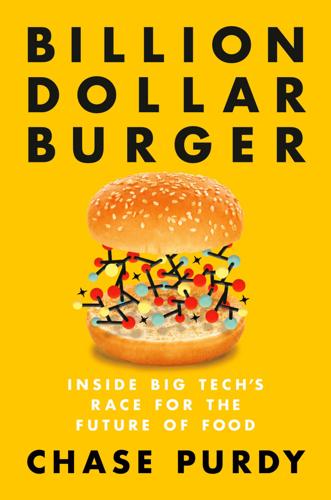
Billion Dollar Burger: Inside Big Tech's Race for the Future of Food
by
Chase Purdy
Published 15 Jun 2020
hundreds of proteins: H. Lodish, et al., Molecular Cell Biology, 4th ed. (New York: W. H. Freeman, 2000), Section 6.2, “Growth of Animal Cells in Culture.” Available from: www.ncbi.nlm.nih.gov/books/NBK21682/. “whole new industry”: Isha Datar, “The Future of Food Is Farming Cells, Not Cattle,” Quartz, October 18, 2018. https://qz.com/1383641/the-future-of-food-is-farming-cells-not-cattle/. “‘don’t play at all’”: Purdy, “The Idea for Lab-Grown Meat Was Born in a Prisoner-of-War Camp.” Chapter Five: Panic in Amsterdam cookbook: Koert van Mensvoort and Hendrik-Jan Grievink, The In Vitro Meat Cookbook (Amsterdam: BIS Publishers, 2014).
…
Thank you for buying an authorized edition of this book and for complying with copyright laws by not reproducing, scanning, or distributing any part of it in any form without permission. You are supporting writers and allowing Penguin to continue to publish books for every reader. Library of Congress Cataloging-in-Publication Data Names: Purdy, Chase, author. Title: Billion dollar burger: inside big tech’s race for the future of food / Chase Purdy. Description: [New York] : Portfolio/Penguin, [2020] | Includes bibliographical references and index. Identifiers: LCCN 2019056850 (print) | LCCN 2019056851 (ebook) | ISBN 9780525536949 (hardcover) | ISBN 9780525536956 (ebook) Subjects: LCSH: Meat—Moral and ethical aspects. | Meat industry and trade—Environmental aspects. | Cultured meat.
…
His shadow covers the entire present-day industry. Post, of course, worked alongside him. Memphis Meats CEO Uma Valeti, and others, have read much of his writing. And Tetrick has acquired van Eelen’s patents, a signal that the original dream is still moving forward, like a baton from one generation to the next, in a push to recast the future of food. 3 THE MOLECULAR MIRACLE This optimistic band of new food technology start-ups has made so much progress that, in just three years, the cost of producing some types of cell-cultured meat has drastically fallen. It took three lab technicians about three months to grow the twenty thousand muscle fibers in Post’s $330,000 burger.

Safe Food: The Politics of Food Safety
by
Marion Nestle
Published 1 Jan 2010
Achieving Safe Food: Alternatives PART TWO SAFETY AS A SURROGATE: THE IRONIC POLITICS OF FOOD BIOTECHNOLOGY 5. Peddling Dreams: Promises versus Reality 6. Risks and Benefits: Who Decides? 7. The Politics of Government Oversight 8. The Politics of Consumer Concern: Distrust, Dread, and Outrage Conclusion: The Future of Food Safety: Public Health versus Bioterrorism Epilogue Appendix: The Science of Plant Biotechnology Notes List of Tables List of Figures Index PREFACE TO THE 2010 EDITION WHEN SAFE FOOD FIRST APPEARED IN 2003, FOOD SAFETY HARDLY appeared on the public agenda. American food safety advocates struggled to be heard but generated little public interest or congressional action.
…
Americans assume that the government keeps food free of contaminants and give food safety little thought. Instead, questions are about dread-and-outrage factors, topics covered in this book such as food biotechnology and irradiation, but also the right to consume raw milk, raw oysters, and other foods the government considers unsafe. Films such as The Future of Food and Our Daily Bread and, later, Food, Inc. and Fresh, dealt with such matters and generated more questions along the same lines. It soon became clear that Safe Food still had plenty to say about current events and, perhaps, could be made more useful to a wider audience. In rereading it, I was relieved to find that it holds up well in establishing the historical basis of our current food safety predicaments.
…
Perhaps it makes no difference whatsoever, but without a formal venue for discussing such questions, people concerned about democratic values will focus on safety questions and use them to generate outrage. This chapter examines the societal issues that underlie public distrust and the reasons why they need to be included in dialogue, if not consensus, about the future of food biotechnology. THE POLITICS OF DISTRUST We have seen that the narrowing of debate about food biotechnology to questions of safety has produced two unanticipated effects. The first is to induce outrage. When scientists and companies say, as they often do, “All we have to do to gain public support for food biotechnology is to educate the public that our products are safe,” they frustrate anyone who cares about democracy in decision making.

The Future Is Faster Than You Think: How Converging Technologies Are Transforming Business, Industries, and Our Lives
by
Peter H. Diamandis
and
Steven Kotler
Published 28 Jan 2020
See: https://www.nytimes.com/2017/11/13/business/dealbook/seasteading-floating-cities.html. Chapter Twelve: The Future of Food 3-D food printer: Jonathan Chadwick, “Here’s How 3-D Printers Are Changing What We Eat,” TechRepublic, November 7, 2017. See: https://www.techrepublic.com/article/heres-how-3-D-food-printers-are-changing-the-way-we-cook/. the robot arm slicing fresh tuna with a smooth motion: Stuart Farrmiond, “The Future of Food: What We’ll Eat in 2028,” Science Focus, May 17, 2019. See: https://www.sciencefocus.com/future-technology/the-future-of-food-what-well-eat-in-2028/. lab-grown provider: Matt Simon, “Lab Grown Meat Is Coming, Whether You Like It or Not,” Wired, February 16, 2018.
…
In fact, when coupled with what we’ve already covered in Part II—excluding government and security, two topics we’re saving for Part III—these sectors round out our look at the main ways Americans make a living. In this chapter we’ll examine the first three. Then, in the next chapter, we’ll close out Part II with a look at the future of food, because it’s both foundationally important and wildly accelerating. Thus, in total, the sectors we’ll review in this chapter are the front runners in the race to reinvent the rest of your life. Let’s dive in.… Coffee, Risk, and the Origins of Insurance In 1680, Edward Lloyd arrived in London.
…
By making these processes faster and cheaper, cutting out the middleman (or woman), and making these opportunities available to all, we’re reimagining three of the largest wealth creation engines in history. Which is, once again, another reason that the future will be faster than you think. CHAPTER TWELVE The Future of Food It’s 2030 and you’re hungry. Recently, you’ve been checking out the latest craze: hybrid cuisines. Your AI has a few suggestions based on everything from your historical preferences to your nutritional needs and your calendar. Tomorrow, you’re going surfing, so packing on a few extra calories beforehand is a good idea.
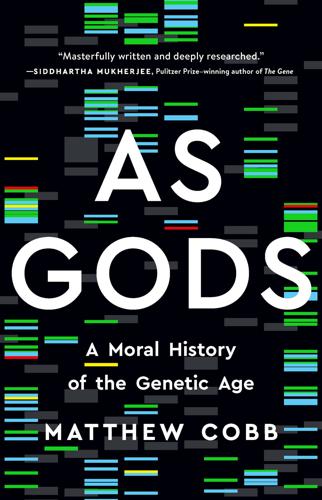
As Gods: A Moral History of the Genetic Age
by
Matthew Cobb
Published 15 Nov 2022
Kloppenburg, J. (1988), First the Seed: The Political Economy of Plant Biotechnology 1492–2000 (Cambridge, Cambridge University Press), p. 11. 18 Daily Telegraph, 8 June 1998. 19 Enserink, M. (1998), Science 281:1124–5. 20 Ewen, S. and Pusztai, A. (1999), Lancet 354:1353–4; Horton, R. (1999), Lancet 354:1729. 21 Schurman and Monro, Fighting for the Future of Food, p. 108. 22 https://www.pewresearch.org/global/2003/06/20/broad-opposition-to-genetically-modified-foods – this link is archived at the Wayback Machine at archive.org. 23 Schurman and Monro, Fighting for the Future of Food; the role of transcendental meditation followers is highlighted by Grohman, G. (2021), Annals of Iowa 80:1–34. 24 Le Monde, 18 January 1998. 25 Le Monde, 14 August 1999. 26 Le Monde, 1 September 1999. 27 Le Monde, 9 September 1999. 28 Lynas, Seeds of Science, pp. 29–31.
…
A photo of the demonstration appears in Charles, D. (2001), Lords of the Harvest: Biotech, Big Money, and the Future of Food (Cambridge, MA, Perseus). 29 For a depressing survey of how the UK press treated GM food in the first half of 1999, see Parliamentary Office of Science and Technology, The ‘Great GM Food Debate’, Report 138, May 2000. 30 Daily Mirror, 16 February 1999. 31 Charles, Lords of the Harvest, p. 272. 32 Ibid., p. 259. 33 Horizon: Is GM Safe? (BBC2, 9 March 2000). http://www.bbc.co.uk/science/horizon/1999/gmfood_script.shtml 34 Schurman and Munro, Fighting for the Future of Food, pp. 140–6. 35 Jasanoff, S. (2016), The Ethics of Invention: Technology and the Human Future (London, Norton), pp. 100–3. 36 Clancy, K. (2017), The Politics of Genetically Modified Organisms in the United States and Europe (London, Palgrave Macmillan). 37 Siefert.
…
For the background to this discovery and the history of Cetus, see Rabinow, P. (1996), Making PCR: A Story of Biotechnology (Chicago, University of Chicago Press). 77 Anonymous (1988), Biotechnology Newswatch, 5 September 1988, p. 7. 78 Heller and Eisenberg (1998). 79 Hanahan et al. (2007), p. 2268. 80 Williams, H. (2013), Journal of Political Economy 121:1–27. 81 Nelsen, L. (2004), Nature Reviews: Molecular Cell Biology 5:1–5; Sampat, B. (2010), Nature 468:755–6. 82 Contreras, J. (2018), Science 361:335–7. 8 Frankenfood 1 Charles, D. (2001), Lords of the Harvest: Biotech, Big Money, and the Future of Food (Cambridge, MA, Perseus); Heimann, J. (2018), Using Nature’s Shuttle: The Making of the First Genetically Modified Plants and the People Who Did It (Wageningen, Wageningen Academic Publishers); Lurquin, P. (2001), The Green Phoenix: A History of Genetically Modified Plants (New York, Columbia University Press); Somssich, M. (2019a), PeerJ Preprints, https://doi.org/10.7287/peerj.preprints.27096v3; Somssich, M. (2019b), PeerJ Preprints, https://doi.org/10.7287/peerj.preprints.27556v2. 2 Chilton, M.
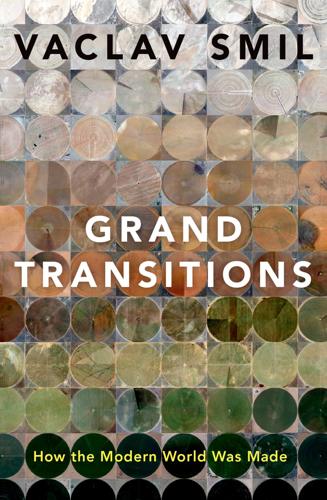
Grand Transitions: How the Modern World Was Made
by
Vaclav Smil
Published 2 Mar 2021
In the 1970s hundreds of millions of people will starve to death. . . ” (Ehrlich 1968, xi). But Ehrlich was not alone in predicting imminent apocalypses; he had just captured the tenor of the times more dramatically than others had done. Robert L. Heilbroner’s bestselling inquiry into the human prospect had this to offer about the imminent future of food: “World food stocks are today at their lowest point since World War II, and there is a general alarm concerning the possibility of unprecedented famines. . . . Meanwhile, world fish harvests have levelled off, or actually declined. . . . Finally, there appears to be no chance of building fertilizer plants rapidly enough to forestall a desperate food shortage in the underdeveloped world” (Heilbroner 1975, 153–154).
…
Review of the State of World Marine Fishery Resources. Rome: FAO. FAO. 2015. The Global Forest Resources Assessment. Rome: FAO. FAO. 2017a. The State of Food Security and Nutrition in the World 2017: Building Resilience for Peace and Food Security. Rome: FAO. FAO. 2017b. World Fertilizer Trends and Outlook to 2020. Rome: FAO. FAO. 2017c. The Future of Food and Agriculture—Trends and Challenges. Rome: FAO. FAO. 2018a. Forest Product Statistics. http://www.fao.org/forestry/statistics/80938/en/ FAO. 2018b. The State of World Fisheries and Aquaculture. Rome: FAO. FAO. 2019. FAOSTAT. http://www.fao.org/faostat/en/#data Fearnside, P.M. 2005. Deforestation in Brazilian Amazonia: History, rates and consequences.
…
S., 271 Çatalhöyük, Turkey, 57 catalytic cracking, 124 catastrophism, 251–54 Ceballos, G., 255–56 cellulosic ethanol, 276 cement, 189, 247, 248f Census Bureau (US), on manufacturing sector, 177–78 centralized animal-feeding operations (CAFOs), 82–83 CH4 (methane), 112–13, 206, 240 Chad children, desired number of, 32 electrification, 139 future of food security in, 270 charcoal making, 116f Chateaubriand, François-Auguste-René, vicomte de, 7–8 cheese, lactose intolerance and, 94–95 chickens, 84, 86 children child labor, 125 infant and childhood mortality, 7–8, 15, 42, 252 nutrition and, 101–2 as old-age security, 41 China as ammonia producer, 252 consumerism, 252 generational transitions, 5–7 Han dynasty, 245 Heilbroner on, 252 inequalities, 23–24, 254–55 premodern, 2–3 summary of changes in, 260 China, agricultural and dietary transitions dietary nutrients, 98 dietary oil supply, 96–97 dietary transition, 93 famines, 100 feed crops, 83–84 fertilizer use, 290–91 food expenditures per capita, 102 food sufficiency, 246 fruit supply, 97 future food requirements and food supply, 269 leaf area gains in, 293–94 meat consumption, 92 mechanized field farming, transition to, 127 milk supply, 95 polyethylene contamination, 111 soil contamination, 110 sugar consumption, 96 China, economic transitions economic growth and development, 17, 45–46, 162–65, 163f, 166 economic inequality, 185–86 economic transition, 154 employment, 153, 171, 179 GDP growth, 161, 248–49, 294 growth rates, 159–60 household debt, 192 industrialization of, 179 manufacturing, 177, 180 material flows, 189 modernization trajectory, 160–61 premodern, lack of economic growth, 155 savings rates, 192 service sector employment, 181, 184 tourism, 196–97 traditional farming, 167 China, energy transitions air conditioners, 142–44 blast furnaces, 119–20 car electrification, 276 coal output and use, 117, 121 compound feeds, use of, 83 electrification, 139, 144–45 energy consumption, 273, 285–86 energy intensity, 150 energy sources, 117–18 material consumption, rise in, 286 motorization of, 124–25 steam-to-diesel locomotives transition, 124 wood-to-coal transition, 118 China, environmental transitions acid deposition, 229 anthropogenic land-use changes, 219–20 carbon dioxide production, 240 city growth, 210–11 croplands, 214, 216–17 deforestation and reforestation, 207, 213 forests, carbon sequestration by, 213–14 impervious surfaces, 210 large dams, 227 multicropping, 215 nitrogen efficiency, 234 ocean dead zones, impact on, 234 phosphate production, 235 plastics, pollution from, 232 soil acidification, 233 wastewater treatment, 230 wilderness area, 221 China, population transitions children, desired number of, 32 demographic burden, 56 demographic transitions, speed of, 36 fertility rates, 33, 36, 38, 40, 43 household registration system, 61–62 intranational migrations, 58–59 old-age dependency ratios, future possibilities of, 264–65 one-child policy, 36, 42, 45 per capita urban water use, 68 population aging, 264–65 population decline, 269 total dependency ratio, 45 urbanization, 61 Chittenden, Russell Henry, 97–98 Chorley, G.

Days of Destruction, Days of Revolt
by
Chris Hedges
and
Joe Sacco
Published 7 Apr 2014
Coalition of Immokalee Food Workers,” CIW 101,” http://www.ciw-online.org/101.html#facts (accessed 1 Jan. 2012). 8. Barry Estabrook, Tomatoland: How Modern Industrial Agriculture Destroyed Our Most Alluring Fruit (Kansas City, MO: Andrews McMeel, 2011), 75. 9. Coalition of Immokalee Food Workers. “CIWNews: CIW at the 2011 Future of Food Conference, Georgetown University, Washington, D.C.,” http://www.ciw-online.org/CIW_at_future_of_food.html. 10. Ibid. 11. “Ending WalMart’s Rural Stranglehold,” The United Food and Commercial Workers, http://www.ufcw.org/docUploads/AG%20Consolidation%20White%20Paper2%2Epdf?CFID=13478539&CFTOKEN=85387754. 12. Carolyn Dimitri and Lydia Oberholtzer, “Marketing U.S.
…
The CIW reports that the USDA reaffirmed the Labor Department’s findings from 2000, demonstrating that farm laborers remain “among the most economically disadvantaged working groups in the U.S.” and that “poverty among farmworkers is more than double that of all wage and salary employees.” http://ciw-online.org/CIW_at_future_of_food.html. 3. “Background Statistics: Market-fresh Tomatoes,” United States Department of Agriculture Economic Research Service (last modified June 10, 2008), http://www.ers.usda.gov/News/tomatocoverage.htm. 4. U.S. Bureau of Labor Statistics, “All Charts, Census of Fatal Occupational Injuries, 2010.”
…
Carolyn Dimitri and Lydia Oberholtzer, “Marketing U.S. Organic Foods: Recent Trends from Farms to Consumers,” U.S. Department of Agriculture, Economic Research Service Bulletin 58, September 2009, http://www.ers.usda.gov/media/185272/eib58_1_.pdf (accessed 10 Sept. 2013). 13. “CIW at the 2011 Future of Food Conference.” 14. Estabrook, 25. 15. Geoffrey M. Calvert, et. al, “Acute Pesticide Poisoning Among Agricultural Workers in the United States, 1998-2005,” American Journal of Industrial Medicine 51 (2008): 883–898, doi:10.1002/ajim.20623. “The rates provided should be considered low estimates of the magnitude of acute pesticide poisoning among agricultural workers.” 16.
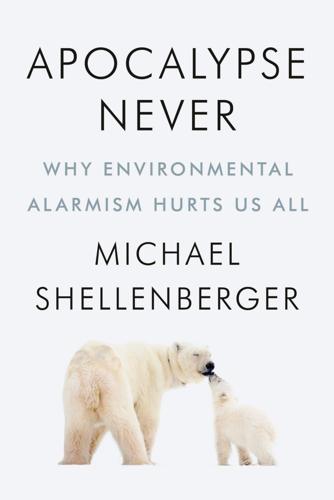
Apocalypse Never: Why Environmental Alarmism Hurts Us All
by
Michael Shellenberger
Published 28 Jun 2020
John Ross, “Ex-judge to Investigate Controversial Marine Research,” Times Higher Education, January 8, 2020. 37. The Future of Food and Agriculture: Alternative Pathways to 2050, Food and Agriculture Organization of the United Nations, 2018, http://www.fao.org/3/I8429EN/i8429en.pdf, 76–77. 38. Eric Holt-Giménez, Annie Shattuck, Miguel Altieri, et al., “We Already Grow Enough Food for 10 Billion People . . . and Still Can’t End Hunger,” Journal of Sustainable Agriculture 36, no. 6 (2012): 595–98, http://dx.doi.org/10.1080/10440046.2012.695331. The Future of Food and Agriculture: Alternative Pathways to 2050, 82. 39. The Future of Food and Agriculture: Alternative Pathways to 2050, 76–77. 40.
…
Masson-Delmotte et al., eds., Climate Change and Land: An IPCC special report on climate change, desertification, land degradation, sustainable land management, food security, and greenhouse gas fluxes in terrestrial ecosystems (IPCC, 2019), https://www.ipcc.ch/site/assets/uploads/2019/11/SRCCL-Full-Report-Compiled-191128.pdf. 66. FAO, The Future of Food and Agriculture–Alternative Pathways to 2050 (Rome: United Nations, 2018), accessed December 16, 2019, http://www.fao.org/global-perspectives-studies/food-agriculture-projections-to-2050/en. 67. Roger Pielke, Jr., “I Am Under Investigation,” The Climate Fix (blog), February 25, 2015, https://theclimatefix.wordpress.com/2015/02/25/i-am-under-investigation. 68.
…
Cassman et al., “Estimating Yield Potential in Temperate High-Yielding, Direct-Seeded US Rice Production Systems,” Field Crops Research 193 (July 2016): 123–32, https://doi.org/10.1016/j.fcr.2016.04.003. Though average yields for some crops such as wheat have plateaued, there is still more room for them to increase. In 2017, a farmer in New Zealand produced an astonishing eight times as much wheat as the Australian average and five times as much as the global average. 27. FAO, The future of food and agriculture—Alternative pathways to 2050 (Rome: Food and Agriculture Organization of the United Nations, 2018), 76–77. 28. Nathaniel D. Mueller, James S. Gerber, Matt Johnston et al., “Closing Yield Gaps Through Nutrient and Water Management,” Nature 490 (2012): 254–57, https://doi.org/10.1038/nature11420. 29.
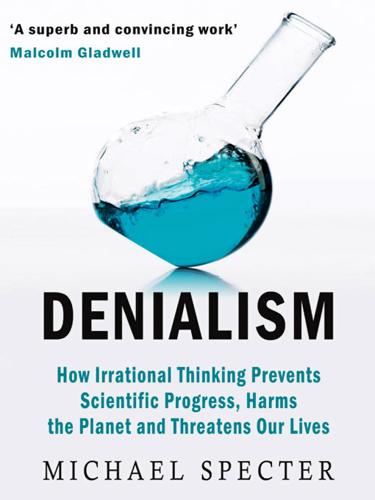
Denialism: How Irrational Thinking Hinders Scientific Progress, Harms the Planet, and Threatens Our Lives
by
Michael Specter
Published 14 Apr 2009
If Louise Fresco had held up two ears of corn at TED—one grown organically and the other engineered with a toxin to resist worms and fungus—I am certain the voting would have been no different than it was with the bread. “Just the mention of genetic engineering, a process that has been used for thirty years and so far has not harmed a single person or animal, can cause alarm,” Pamela C. Ronald has pointed out in Tomorrow’s Table: Organic Farming, Genetics, and the Future of Food, which she wrote with her husband, Raoul Adamchak. The two make an unusual couple: she is professor of plant pathology and chair of the Plant Genomics Program at the University of California at Davis. He is an organic farmer. Perhaps not surprisingly, they believe agriculture can—and must—accommodate both approaches.
…
Kirby also maintains a robust collection of articles, testimony, and transcripts at http://www.evidenceofharm.com/index.htm. 3. The Organic Fetish The best book I have ever read about the ways in which genetically engineered and organic food relate to each other and to society is by the husband-and-wife team Pamela Ronald and Raoul Adamchak, Tomorrow’s Table: Organic Farming, Genetics, and the Future of Food (Oxford University Press, 2008). Adamchak is an organic farmer and Ronald a plant geneticist. Their knowledge, sophistication, and priorities ought to provide at least some evidence that seemingly irreconcilable differences are not impossible to resolve. (Ronald also maintains a fascinating blog by the same name, http://pamelaronald.blogspot.com.)
…
Our Final Century: Will Civilisation Survive the Twenty-first Century? London: Arrow Books, 2004. Regis, Ed. What Is Life? Investigating the Nature of Life in the Age of Synthetic Biology. New York: Farrar, Straus and Giroux, 2008. Ronald, Pamela C., and Raoul W. Adamchak. Tomorrow’s Table: Organic Farming, Genetics, and the Future of Food. Oxford, UK: Oxford University Press, 2008. Rogers, Michael. Biohazard. New York: Knopf, 1997. Rose, Nikolas. The Politics of Life Itself: Biomedicine, Power, and Subjectivity in the Twenty-first Century. Princeton, NJ: Princeton University Press, 2007. Sarich, Vincent, and Frank Miele.
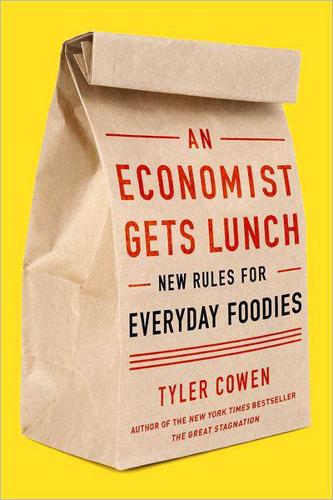
An Economist Gets Lunch: New Rules for Everyday Foodies
by
Tyler Cowen
Published 11 Apr 2012
Advice on how to “eat green” or “live green” is plentiful, but too often the comments are marred by broader political agendas, misunderstandings of how food markets operate, or a search for “feel good” answers that aren’t actually effective. If you watch the recent bestselling movies on food, such as Super Size Me, Food, Inc., and The Future of Food, they share a common feature: a snarky and somewhat self-righteous approach to the choices that other human beings make in markets, most of all with their food. However, for all the virtues of our food markets, they do sometimes require correction. Choosing Friends and Enemies There are plenty of policies or choices that make us feel good about ourselves, and we are too likely to choose those policies, even when they are not going to prove effective.
…
For background on GMOs, in addition to the National Research Council study (The Impact of Genetically Engineered Crops on Farm Sustainability in the United States, Washington, D.C.: National Academies Press, 2010), see Pamela C. Ronald and Raoul W. Adamchak, Tomorrow’s Table: Organic Farming, Genetics, and the Future of Food (New York: Oxford University Press, 2008), and “Global Status of Commercialized Biotech/GM Crops: 2010,” ISAAA Brief 42-2010, http://isaaa.org/resources/publications/briefs/42/executivesummary/default.asp. Also useful are Indur M. Goklany, The Improving State of the World: Why We’re Living Longer, Healthier, More Comfortable Lives on a Cleaner Planet (Washington, D.C.: Cato Institute, 2007), and Henry I.
…
See also seafood and Bangladeshi food, 126 and ethnic supermarkets, 46–51 fish and chips, 12, 231 fish head curry, 220 and German food, 233 and microwave ovens, 258–59 and transportation infrastructure, 7 flash-freezing, 257–58 Florence, 237 flour, 201–2, 202–3 flowers, 171 Flushing, Queens, 74, 75, 130–31 Fogo de Chao, 111 fois gras, 184 Foley, Jonathan, 153 Food, Inc. (2008), 168, 172 food crises, 154 Food Network, 18, 120 “The Food of the Tarahumaras,” 251 Food Rules (Pollan), 8 food safety and barbecue, 105, 108 and beef aging, 191–92 and Chinese restaurants, 137 and Genetically Modified Organisms, 163 and Indian food, 223–24 and lard, 200, 201 and liability laws, 192 and meats, 192 and Mexican food, 187, 195–96, 222 before modern food system, 9 and nonpasteurized cheeses, 197 safety standards, 59 and street food, 222–23 and water safety, 6 food stands and stalls, 220, 223–24 food trucks, 2, 76–77, 243–45 fossil fuels, 178, 179–81, 186 Fourier, Charles, 13 France and French food, 22, 32–33, 87–88, 116, 218–19, 225–31 free-range poultry, 194 fresh foods, 49, 125 Fritos, 203 frozen foods, 49, 196, 257–58, 259 fruits, 24, 46, 207–8, 251 frying, 194 fusion cuisines, 28, 73–74, 76, 80, 220 The Future of Food (2004), 168 Gagnaire, Pierre, 217 gas grills, 104 gastrosophy, 13 Gelber, Matthias, 167–68 genetic engineering, 143, 145–46, 160–65, 172–73 Georgia (country), 234 Georgia (state), 107, 109 Germany and German food and breads, 31 Chinese food in Germany, 130, 234 described, 232–36 and French restaurants, 87–88 and German immigrants, 30, 232, 234–35 and home cooking, 250 influence on American food, 28, 30 Ghana, 163 global warming, 162 goats, 98 Google, 79 government policies and regulations and barbecue sauces, 108 and food supply issues, 155–57 and food trucks, 77 and France, 225, 226, 228–29 and Indian food, 158, 223 and malnutrition, 150 and meat safety, 192 and perceptions of American food, 8 and pit barbecues, 106 price controls, 152 in Singapore, 222 tax policy, 149, 158, 178–80 and water resources, 157 and zoning issues, 182 grain trade, 15 Gramina, 162 Great Depression, 24, 29, 67 “the great food crunch,” 153–54, 156 Great Recession, 75 Great Wall supermarket checkout experience, 51–52 described, 40–44 fish and seafood selection, 46–51 and health considerations, 149 indispensable items, 52–55 produce selection, 43–44, 44–46, 53 Greece and Greek food, 30, 99, 234 green energy, 181, 182 green revolutions, 2, 143–48, 152, 155, 160, 165 greens, 4–46, 48, 53 Grier, Kevin, 81 grilling, 86 Guam, 107 Guatemalan food, 50, 203 Guerrero, Mexico, 98 gyoza dumplings, 217 gyro cooking style, 99 Haiti, 59 haleem, 124 hamburgers, 28 hams, 193 hangi, 88 Hard Rock Café, 73 Hart-Cellar Act, 30–31 hash, 109 haute cuisine, 73, 109–10 Hawaii, 88, 106–7, 123 Head, Nelson, 92 health-conscious consumers, 192.
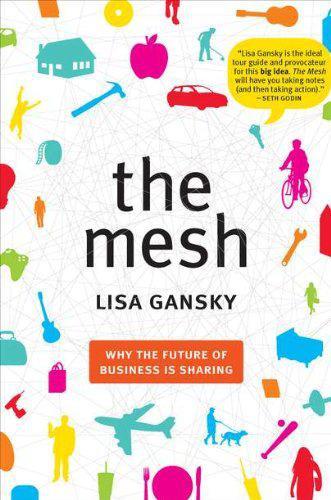
The Mesh: Why the Future of Business Is Sharing
by
Lisa Gansky
Published 14 Oct 2010
New York: Random House, 2009. Kilian, Jennifer, and Barbara Pantuso. “The Future of Health Care Is Social.” Fast Company, October 6, 2009, http://www.fastcompany.com/future-of-health-care (accessed March 17, 2010). Klein, Laura. “Organic Farming and the Future of Food.” TriplePundit, October 29, 2009, http://www.triplepundit. com/2009/10/organic-farming-and-the-future-of-food (accessed March 17, 2010). Korn, Melissa. “A Last-Minute Dash for Tuition.” Wall Street Journal, August 19, 2009, http://online.wsj.com/article/SB10001424052970203674704574336420044733980.html (accessed March 16, 2010). Kristof, Nicholas D.
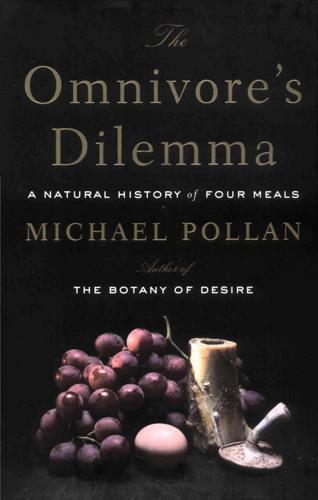
The omnivore's dilemma: a natural history of four meals
by
Michael Pollan
Published 15 Dec 2006
A FEW YEARS AGO, in the days when "food security" meant something very different than it does today, I had the chance to visit one of the small handful of places where this kind of work is done. The Bell Institute, a leafy corporate campus on the outskirts of Minneapolis, is the research-and-development laboratory for General Mills, the sixthlargest food company in the world. Here nine hundred food scientists spend their days designing the future of food—its flavor, texture, and packaging. Much of their work is highly secretive, but nowhere more so than in the cereals area. Deep in the heart of the heart of the Bell Institute, down in the bowels of the laboratory, you come to a warren of windowless rooms called, rather grandly, the Institute of Cereal Technology.
…
Back then it was the printing press that allowed the Protestants to break off and form their own communities; now it's the Internet, splintering us into tribes that want to go their own way." Of course! Joel saw himself as more of a Luther than a Lenin; the goal wasn't to blow up the Church, but simply to step around it. Protestantism also comes in many denominations, as I suspect will the future of food. Deciding whether that future should more closely resemble Joel's radically local vision or Whole Foods's industrial organic matters less than assuring that thriving alternatives exist; feeding the cities may require a different sort of food chain than feeding the countryside. We may need a great many different alternative food chains, organic and THE MARKET: "GREETINGS FROM THE NON-BARCODE PEOPLE" local, biodynamic and slow, and others yet undreamed of.
…
Larry Johnson at the Center for Crops Utilization Research at Iowa State was generous with his time and expertise, showing and telling me all I wanted to know about the wet-milling of corn and soybeans. The Corn Refiners Association (www.corn.org) is an invaluable resource on the history, technology, and products of corn refining; see especially their annual reports, a trove of interesting statistics and history. Ford, Brian J. The Future of Food (New York: Thames & Hudson, 2000). Goodman, Michael, and Michael Redclift. Refashioning Nature: Food, Ecology, and Culture (London: Routledge, 1991). Gussow, Joan Dye, ed. The Feeding Web: Issues in Nutritional Ecology (Palo Alto, CA: Bull Publishing, 1978). This remains an invaluable anthology (unfortunately out of print) on the entire range of food issues, and serves as a reminder that much of the discussion our culture is having about the politics and ecology of food today is a reprise of a discussion that took place in the 1970s.

An Edible History of Humanity
by
Tom Standage
Published 30 Jun 2009
“No fancied equality, no agrarian regulations in their utmost extent, could remove the pressure of it even for a single century. And it appears, therefore, to be decisive against the possible existence of a society, all the members of which should live in ease, happiness, and comparative leisure; and feel no anxiety about providing the means of subsistence for themselves and families.” He anticipated a future of food shortages, starvation, and misery. The potato, Malthus believed, was partly to blame. Having been championed as a remedy for starvation, it now seemed to be hastening the onset of an apparently inevitable crisis. And even if it provided enough food to go around, Malthus argued, the potato caused the population to increase far beyond the opportunities for employment.
…
It may make sense to grow staple crops using chemically intensive methods in some parts of the world, and to trade them for specialist crops grown using traditional methods elsewhere, for example. It is far too simplistic to suggest that the world faces a choice between organic fundamentalism on the one hand and blind faith in biotechnology on the other. The future of food production, and of mankind, surely lies in the wide and fertile middle ground in between. EPILOGUE INGREDIENTS OF THE FUTURE There is no feast which does not come to an end. —CHINESE PROVERB On a remote island in the Arctic circle, seven hundred miles from the North Pole, an incongruous concrete wedge protrudes from the snow on the side of a mountain.
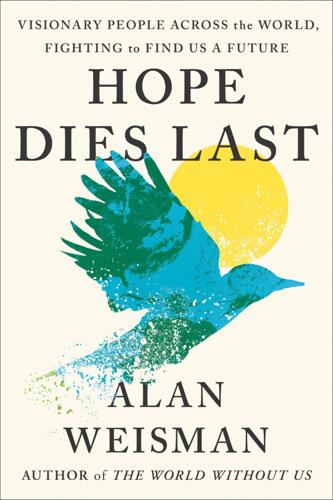
Hope Dies Last: Visionary People Across the World, Fighting to Find Us a Future
by
Alan Weisman
Published 21 Apr 2025
Warming seas, acidifying seas, overfished seas, overpopulated and over-stressed civilizations—it was a lot to ask. “We loved meeting Ricardo and Isabel,” Laurie told Ángel. “It was moving to realize that just like the traditional knowledge of the Comcáac, the knowledge here goes back thousands of years.” “Now we’re bringing it forward,” Ángel said. “With the land overexploited, the sea is the future of food. All your work, all the work we’ll keep doing—we’re opening windows into that future. Sooner or later, the world will have to look through them.” Skip Notes *1 It still does: each year the Pacific plate pulls Baja California nearly two inches farther away. *2 Except for their shallower keels, Seri balsas looked nearly identical to reed boats Sumerians used in Iraq’s marshes
…
Viola, Stefania, William Reoseby, Stefano Santabarbara, Dennis Nürnberg, Ricardo Assunção, Holger Dau, Julien Sellés, et al. “Impact of Energy Limitations on Function and Resilience in Long-Wavelength Photosystem II.” eLife, July 19, 2022. https://doi.org/10.7554/eLife.79890. Voices from DARPA. “Future of Food: Meals from Microbes.” Podcast episode 56. https://youtu.be/9om-s4ISFMY?si=4aZ0as0VoICj3w9c. Wackett, Lawrence P. “Microbial Meat Substitutes.” Microbial Biotechnology 13, no. 4 (July 2020): 1284–1285. https://doi.org/10.1111/1751-7915.13610. Zarook, Ruqaiyah. “Why the Pentagon Is the World’s Biggest Single Greenhouse Gas Emitter.”
…
Paddison, Laura. “How Replanted Seagrass Is Restoring the Ocean.” Yes! Solutions Journalism, August 2, 2021. https://www.yesmagazine.org/environment/2021/08/02/replanted-seagrass-is-restoring-the-ocean. Page, Tom. “Call to Earth: Special Report.” CNN, https://www.cnn.com/interactive/2021/10/world/future-of-food-in-the-past-c2e-spc. Parque de los Toruños. “El parque.” http://www.juntadeandalucia.es/avra/opencms/parque-torunos/contenido/1-Conoce-el-parque/parque.html?ulSelected=md-js-menu_submenu-1296092944&liSelected=El%20Parque. Pearlstein, S. L., R. S. Felger, E. P. Glenn, J. Harrington, K.
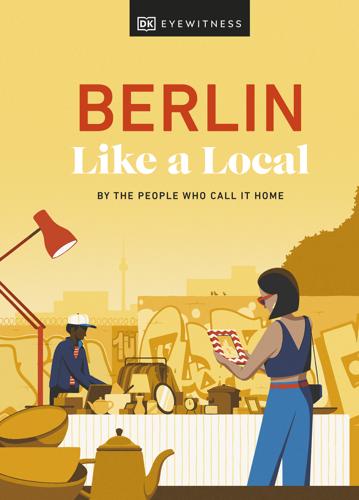
Berlin Like a Local
by
Dk Eyewitness
All the veggies and herbs at this vertitable eden are harvested from the restaurant’s on-site garden, which you’re free to roam between courses. All year-round, hungry locals flock here to savour seasonal, Italian- and German-inspired fare, warming up over bowls of sumptuous ragout in winter or enjoying fresh salads out on the terrace in summer. Try it! CRUNCHY MUNCH Creepy crawlies could well be the future of food, so why not wriggle away from misconceptions? Try a cooking class at Mikrokosmos (mikrokosmosberlin.com), Germany’s first restaurant to serve insects. g Sustainable Dining g Contents Google Map NEUE REPUBLIK REGER Map 3; Bouchéstrasse 79A, Alt-Treptow; ///fanfare.fits.sobered; www.republik.sexy It’s not often people draw on their uni thesis post graduation, but one of the owners here had an idea worth sharing: the “ideal nation”.

The End of Doom: Environmental Renewal in the Twenty-First Century
by
Ronald Bailey
Published 20 Jul 2015
Adding crop varieties that can generate their own fertilizer, resist drought, flourish in saline soils, fight off diseases and pests without chemical sprays, and grow without weeding and plowing makes organic agriculture that much gentler on the natural environment. In their 2008 book Tomorrow’s Table: Organic Farming, Genetics, and the Future of Food, the wife-and-husband team of University of California at Davis plant geneticist Pamela Ronald and organic farmer Raoul Adamchak write, “We believe that the judicious incorporation of two important strands of agriculture—genetic engineering and organic farming—is key to helping feed the growing population in an ecologically balanced manner.”
…
Foley, “Comparing the Yields of Organic and Conventional Agriculture,” Nature 485 (May 10, 2012): 229–234. serenoregis.org/wp-content/uploads/2012/06/nature11069.pdf. judicious incorporation of two important strands: Pamela Ronald and Raoul Adamchak, Tomorrow’s Table: Organic Farming, Genetics, and the Future of Food. New York: Oxford University Press, 2008, xi. 6. Can We Cope with the Heat? “a true planetary emergency”: MSNBC, “Gore Takes Warming Warning to Congress,” March 21, 2007. www.nbcnews.com/id/17718399/ns/us_news-environment/t/gore-takes-warming-warning-congress/#.VEBxrBaKX_Y. “an endless chain of disasters”: Bill McKibben, Oil and Honey: The Education of an Unlikely Activist.

Whole Earth Discipline: An Ecopragmatist Manifesto
by
Stewart Brand
Published 15 Mar 2009
Raoul teaches organic farming at the University of California-Davis; prior to that, he was a partner in a commercial organic farm called Full Belly; he used to be president of the Board of California Certified Organic Farmers. Pam is a plant geneticist. Besides being married (with kids), they are coauthors of a charming, densely informative book published in 2008, Tomorrow’s Table: Organic Farming, Genetics, and the Future of Food. Drawing on the daily details of their professional lives, the authors make a case for treating GE crops and organic farming as convergent techniques for feeding the most people with the least harm to the land. “To meet the appetites of the world’s population without drastically hurting the environment,” they write, “requires a visionary new approach: combining genetic engineering and organic farming. . . .
…
Open-minded, even-handed, and alert, the Nuclear Energy Institute bloggers give context to nuclear news in a way that mainstream media don’t. Idaho Samizdat: Nuke Notes (online), Dan Yurman, blogger. Daily detailed reports on consequential nuclear news. GENETIC ENGINEERING Tomorrow’s Table: Organic Farming, Genetics, and the Future of Food (2008), Pamela Ronald and Raoul Adamchak. Organic farming marries genetic engineering and lives happily ever after. The book has a real-life texture missing in most works about GE or organic. The Doubly Green Revolution: Food for All in the Twenty-first Century (1999), Gordon Conway. Experience tells.

Exponential: How Accelerating Technology Is Leaving Us Behind and What to Do About It
by
Azeem Azhar
Published 6 Sep 2021
I use the term in a slightly different context, referring to the overall breakdown of the thesis that technology necessarily enables single large global markets, mediated by a set of common rules. 4 Philip Garnett, Bob Doherty, and Tony Heron, ‘Vulnerability of the United Kingdom’s Food Supply Chains Exposed by COVID-19’, Nature Food, 1(6), 2020, pp. 315–318 <https://doi.org/10.1038/s43016-020-0097-7>. 5 Alex Lee, ‘How the UK’s Just-in-Time Delivery Model Crumbled under Coronavirus’, Wired, 30 March 2020 <https://www.wired.co.uk/article/stockpiling-supermarkets-coronavirus> [accessed 11 September 2020]. 6 UBS, The Food Revolution, July 2019 <https://www.ubs.com/global/en/ubs-society/our-stories/2019/future-of-food/_jcr_content/mainpar/toplevelgrid_1749059381/col1/linklist/link.1695495471.file/bGluay9wYXRoPS9jb250ZW50L2RhbS91YnMvZ2xvYmFsL3Vicy1zb2NpZXR5LzIwMTkvZm9vZC1yZXZvbHV0aW9uLWp1bHkucGRm/food-revolution-july.pdf>. 7 ‘Growing Higher – New Ways to Make Vertical Farming Stack up’, The Economist, 31 August 2019 <https://www.economist.com/science-and-technology/2019/08/31/new-ways-to-make-vertical-farming-stack-up> [accessed 4 August 2020]. 8 ‘World’s Biggest Rooftop Greenhouse Opens in Montreal’, Phys.org, 26 August 2020 <https://phys.org/news/2020-08-world-biggest-rooftop-greenhouse-montreal.html> [accessed 5 September 2020]. 9 Elizabeth Curmi et al., ‘Feeding the Future’, Citi Global Perspectives and Solutions, November 2018 <https://www.citivelocity.com/citigps/feeding-the-future/> [accessed 18 March 2021]. 10 Joel Jean, Patrick Richard Brown and Institute of Physics (Great Britain), Emerging Photovoltaic Technologies (Bristol, UK: IOP Publishing, 2020), pp. 1–5 <https://iopscience.iop.org/book/978-0-7503-2152-5> [accessed 12 October 2020]. 11 Brendan Coyne, ‘Vehicle-to-Grid: Are We Nearly There Yet?’
…
That’s a Problem.’, Business Insider, 10 October 2020 <https://www.businessinsider.com/tiktok-ban-hearings-politicians-senators-know-nothing-about-tech-2020-10> [accessed 12 April 2021] Stoltenberg, Jens, ‘Nato Will Defend Itself’, Prospect Magazine, 27 August 2019 <https://www.prospectmagazine.co.uk/world/nato-will-defend-itself-summit-jens-stoltenberg-cyber-security> [accessed 12 March 2020] Tarnoff, Ben, ‘The Making of the Tech Worker Movement’, Logic Magazine, 4 May 2020 <https://logicmag.io/the-making-of-the-tech-worker-movement/full-text/> [accessed 3 April 2021] Thelen, Kathleen, How Institutions Evolve: The Political Economy of Skills in Germany, Britain, the United States, and Japan (Cambridge, UK: Cambridge University Press, 2004) <https://doi.org/10.1017/CBO9780511790997> Thiel, Peter, ‘Competition Is for Losers’, Wall Street Journal, 12 September 2014 <https://online.wsj.com/articles/peter-thiel-competition-is-for-losers-1410535536> [accessed 9 October 2020] Thurner, Stefan, Peter Klimek and Rudolf Hanel, Introduction to the Theory of Complex Systems (Oxford: Oxford University Press, 2018) <https://www.oxfordscholarship.com/view/10.1093/oso/9780198821939.001.0001/oso-9780198821939> [accessed 19 July 2020] Tisné, Martin, ‘It’s Time for a Bill of Data Rights’, MIT Technology Review, 14 December 2018 <https://www.technologyreview.com/2018/12/14/138615/its-time-for-a-bill-of-data-rights/> [accessed 8 October 2020] Tufekci, Zeynep, ‘YouTube, the Great Radicalizer’, New York Times, 10 March 2018 <https://www.nytimes.com/2018/03/10/opinion/sunday/youtube-politics-radical.html> [accessed 18 October 2020] Turck, Matt ‘The Power of Data Network Effects’, Matt Turck [blog], 2016 <https://mattturck.com/the-power-of-data-network-effects/> [accessed 3 August 2020] UBS, The Food Revolution, July 2019 <https://www.ubs.com/global/en/ubs-society/our-stories/2019/future-of-food/_jcr_content/mainpar/toplevelgrid_1749059381/col1/linklist/link.1695495471.file/bGluay9wYXRoPS9jb250ZW50L2RhbS91YnMvZ2xvYmFsL3Vicy1zb2NpZXR5LzIwMTkvZm9vZC1yZXZvbHV0aW9uLWp1bHkucGRm/food-revolution-july.pdf> Van Reenen, John, and Christina Patterson, ‘Research: The Rise of Superstar Firms Has Been Better for Investors than for Employees’, Harvard Business Review, 11 May 2017 <https://hbr.org/2017/05/research-the-rise-of-superstar-firms-has-been-better-for-investors-than-for-employees> [accessed 2 September 2020] Van Reenen, John, Christina Patterson, Lawrence Katz, David Dorn and David Autor, ‘The Fall of the Labor Share and the Rise of Superstar Firms’, CEP Discussion Paper No. 1482, October 2019 <http://cep.lse.ac.uk/pubs/download/dp1482.pdf> van Zanden, J.

Innovation and Its Enemies
by
Calestous Juma
Published 20 Mar 2017
An extension of this view clarifies the relationship between guilds and market size: “For small markets, firm profits are insufficient to cover the fixed cost of adopting the new technology, and hence, specialized workers have no reason to form guilds; for intermediate sized markets, firm profits are large enough to cover the higher fixed costs, but not large enough to defeat workers’ resistance, and so workers form guilds and block adoption; and for large markets, these profits are sufficiently large to overcome worker resistance and so guilds disband and the more productive technology diffuses throughout the economy.” Klaus Desmet and Stephen L. Parente, “Resistance to Technology Adoption: The Rise and Decline of Guilds,” Review of Economic Dynamics 17 (2013): 437–458. 76. See, for example, Rachel Schurman and William A. Munro, Fighting for the Future of Food: Activists versus Agribusiness in the Struggle over Biotechnology (Minneapolis: University of Minnesota Press, 2010). 77. Mokyr, “Technological Inertia,” 332. 78. Bruce J. Hunt, “‘Practice vs. Theory’: The British Electrical Debate, 1880–1891,” ISIS 74, no. 3 (1983): 235–283. 79. A. D. Farr, “Early Opposition to Obstetric Anaesthesia,” Anaesthesia 35 (1980): 902. 80.
…
Thomond and Fioina Lettice, “Allocating Resources to Disruptive Innovation Projects: Challenging Mental Models and Overcoming Management Resistance,” International Journal of Technology Management 44, nos. 1–2 (2008): 140. 54. Michael A. Hiltzik, Dealers of Lightning: Xerox PARC and the Dawn of the Computer Age (New York, HarperBusiness, 2000). 55. See, for example, Rachel Schurman and William A. Munro, Fighting for the Future of Food: Activists versus Agribusiness in the Struggle over Biotechnology (Minneapolis: University of Minnesota Press, 2010). 56. Kenneth A. Oye, Kevin Esvelt, Evan Appleton, Flaminia Catteruccia, George Church, Todd Kuiken, Shlomiya Bar-Yam Lightfoot, Julie McNamara, Andrea Smidler, and James P. Collins, “Regulating Gene Drives,” Science 345, no. 6197 (2014): 626–628. 57.

Imaginable: How to See the Future Coming and Feel Ready for Anything―Even Things That Seem Impossible Today
by
Jane McGonigal
Published 22 Mar 2022
I’ll explain my design process and give you all the information you need to create and run your own social simulation, about any future topic you want. Along the way, I will be giving you many forecasts for the next decade of unthinkable change, covering everything from the future of learning and the future of work to the future of food and the future of money; from the future of social media and the future of health care to the future of climate action and government—all so you have a better idea of the risks, opportunities, and dilemmas ahead. These ten-year forecasts will help you become more resilient to future shocks.
…
As my institute colleague Kathi Vian says, “When a large disturbance shakes a complex system, the weakest parts of the system collapse first.”48 It’s clear that the problems we refuse to solve today will complicate and intensify the crises we face tomorrow. Fortunately, once we’ve diagnosed a deeper disease, it’s easier to predict future symptoms. Going forward, we now have the opportunity to think about how these same preexisting conditions might manifest again. Whatever future we’re imagining or predicting—the future of food, the future of voting, the future of learning, the future of cities—we can consider how these same systemic weaknesses might undermine our goals and create new risks. At the Institute for the Future, we’re asking these “deeper disease” questions about every future scenario we imagine: Who gets sick in this future?

The Rational Optimist: How Prosperity Evolves
by
Matt Ridley
Published 17 May 2010
Pollan, M. 2006 The Omnivore’s Dilemma: the Search for the Perfect Meal in a Fast Food World. Bloomsbury. p. 150 ‘when a technology came along that promised to make organic farming both competitive and efficient, the organic movement promptly rejected it’. Ronald, P. and Adamchak, R.W. 2008. Tomorrow’s Table: Organic Farming, Genetics and the Future of Food. Oxford University Press. p. 152 ‘a near-doubling of yield and a halving of insecticide use’. ISAAA 2009. The Dawn of a New Era: Biotech Crops in India. ISAAA Brief 39, 2009: http://www.isaaa.org/resources/publications/downloads/The-Dawn-of-a-New-Era.pdf. p. 152 ‘the use of insecticides is down by as much as 80 per cent’.
…
Suppression of cotton bollworm in multiple crops in China in areas with Bt Toxin-containing cotton. Science 321:1676–8 (doi: 10.1126/science.1160550). p. 152 ‘the leaders of the organic movement locked themselves out of a new technology’. Ronald, P.C. and Adamchak, R.W. 2008. Tomorrow’s Table: Genetics, and the Future of Food. Oxford University Press. p. 152 ‘the amount of pesticide not used because of genetic modification at over 200 million kilograms of active ingredients’. Miller, J.K. and Bradford, K.J. 2009. The pipeline of transgenic traits in specialty crops. Unpublished paper, Kent Bradford. p. 152 ‘writes the Missouri farmer Blake Hurst’.
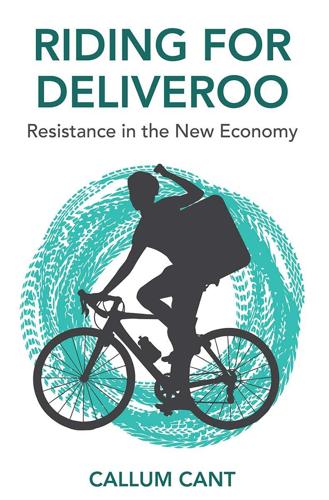
Riding for Deliveroo: Resistance in the New Economy
by
Callum Cant
Published 11 Nov 2019
Cocco (2018) Just Eat shares fall 7% after reports Uber looking at Deliveroo. Financial Times. www.ft.com/content/600e8d40-bd6c-11e8-8274-55b72926558f. 21. K. Moody (2017) On new terrain: how capital is reshaping the battleground of class war. Haymarket Books, p. 50. 7 Looking Forward As I see it, there are three perspectives on the future of food platforms. The first is the game plan of the bosses themselves. The second is that game plan modified by a liberal reform agenda. The third is some form of democratic reorganization from below, led by the workers themselves. This chapter will explore these three perspectives in turn. Fully Automated Luxury Food Delivery?

Aerotropolis
by
John D. Kasarda
and
Greg Lindsay
Published 2 Jan 2009
I traced a path from Sun Belt cities such as Los Angeles and Dallas (where the layover was invented) through Louisville and Memphis—decaying river towns reinvigorated by e-commerce—and onward to meet Kasarda in North Carolina. By then, he’d convinced Detroit’s leaders that an aerotropolis was their city’s best chance at a future. In Amsterdam, I learned how flowers portended the airborne future of food, and while connecting through India, China, and Dubai, I met the traders who traverse the New Silk Road. The aim of this book is to tell the story of how these things went from being impossible to inevitable. 1 A TALE OF THREE CITIES Los Angeles, Washington, and Chicago are the sum of their airports.
…
Britain discovered just how much of its produce is grown and flown from overseas during last April’s volcanic ash crisis, when grounded flights led to shortages. Asparagus, grapes, green onions, and lettuce all went missing at Heathrow. Airlifted food miles have tripled in Britain since 1992, growing an average of 9 percent annually while total imports barely budged. This, in turn, has sparked a heated debate on the future of food: Will it be locally grown, or global? And which is the right thing to do? Flowers and Food Miles In January 2007, Sir Terry Leahy, the chief executive of Tesco, Britain’s largest retailer, delivered a speech about climate change. The grocery chain faced mounting pressure from customers to reduce its carbon footprint—and, by extension, their own.
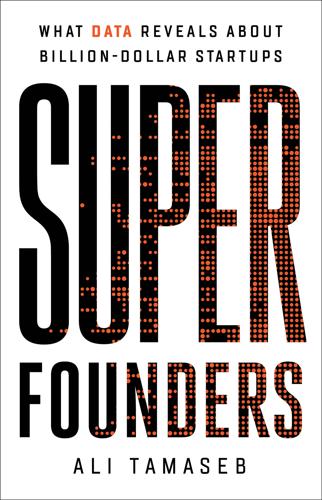
Super Founders: What Data Reveals About Billion-Dollar Startups
by
Ali Tamaseb
Published 14 Sep 2021
Henrique Dubugras, the co-founder of Brex, told me he was most excited about companies focused on rebuilding insurance. Mario Schlosser, the co-founder of Oscar Health, pointed to the wealth of opportunities still left to revamp healthcare. Max Mullen, who co-founded Instacart, raved about the future of food; Max Levchin of Affirm and PayPal talked about the importance of “clean water, access to food, climate change, and improvement in education.” For Neha Narkhede of Confluent, it was “the consumerization of the enterprise,” meaning a bottom-up adoption of tools to make enterprise sales happen. Michelle Zatlyn, the co-founder of Cloudflare, was excited about the future of social networks.
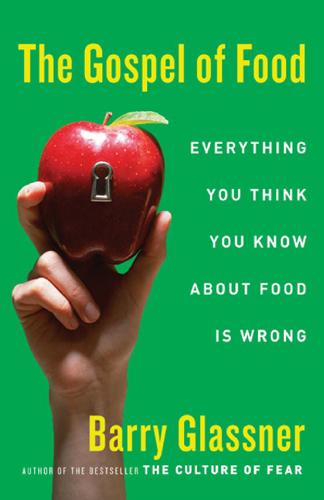
The Gospel of Food: Everything You Think You Know About Food Is Wrong
by
Barry Glassner
Published 15 Feb 2007
Rob Walker, “A Spoonful of Attitude,” New York Times Magazine, August 22, 2004; Sherri Day, “Bottled Water Is Still Pure, but It’s Not Simple Anymore,” New York Times, August 3, 2002; Barbara Durr, “Americans Get Taste for Bottled Water,” Financial Times, June 24, 2002; Carol Ness, “Vitamin W,” San Francisco Chronicle, April 2, 2003; Robert Davis, “Aches & Claims,” Wall Street Journal, November 12, 2002; Theresa Howard, “Enhanced Waters Pour onto Shelves,” USA Today, August 23, 2002; Greg Kitzmiller, “Examining the Market for Nutraceutical Water,” Nutraceuticals World (August 2002); and information from the manufacturers’ Web sites. 17. Mark Messina, Johanna W. Lampe, et al., “Reductionism and the Narrowing Nutrition Perspective,” Journal of the American Dietetic Association 101 (2001): pp. 1416–19; Michael Pollan, “The Futures of Food,” New York Times, May 4, 2003; Nestle, Food Politics, part 5; Melinda Fulmer, “What Comes First, the Egg or the Algae DHA Omega-3?” Los Angeles Times, September 8, 1999, pp. A1 and A9; Eric Peterson, “OmegaTech Getting Its Eggs in a Row,” Boulder Country Business Report, December 17, 1999; Katy McLaughlin, “Shelling Out for Designer Eggs,” Wall Street Journal, March 17, 2004. 18.

Cheese and Culture: A History of Cheese and Its Place in Western Civilization
by
Paul Kindstedt
Published 31 Mar 2012
Praise for Cheese and Culture “In this painstakingly researched yet passion-laced book, Paul Kindstedt shows us how cheese, from its rudimentary beginnings to today’s manufacturing, is inextricably linked to culture and, no less, to our future. Cheese and Culture is essential reading for anyone who loves cheese and, equally, cares about the future of food itself.” —Laura Werlin, author, Laura Werlin’s Cheese Essentials “All honor and respect to Aristaeus—the Greek god who taught us to make cheese—and to Paul Kindstedt, who in Cheese and Culture teaches us its glorious history ever since.” —Rob Kaufelt, proprietor, Murray’s Cheese NYC “From the Garden of Eden to the dairy industries of today, Paul S.
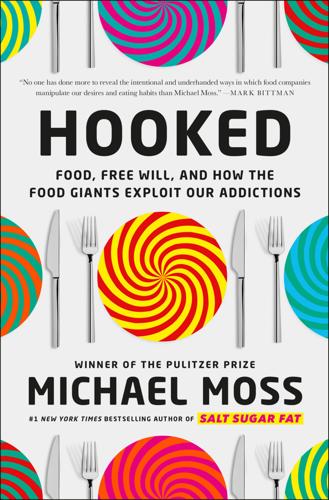
Hooked: Food, Free Will, and How the Food Giants Exploit Our Addictions
by
Michael Moss
Published 2 Mar 2021
In a trial in Japan, one hundred thousand people have signed on for the company’s program in which they can send in samples of their blood and DNA for testing, in exchange for a personalized nutrition protocol aimed at resolving whatever eating issues they may have. The project was the brainchild of Nestlé’s former chief executive Peter Brabeck-Letmathe, who wrote in a 2016 book, Nutrition for a Better Life, that the future of food is in personalized diets and health programs. “Using a capsule similar to a Nespresso, people will be able to take individual nutrient cocktails or prepare their food via 3D printers according to electronically recorded health recommendations,” he predicted. Neither vegetables nor whole grains nor cooking is central to this Nestlé venture.

How to Spend a Trillion Dollars
by
Rowan Hooper
Published 15 Jan 2020
As well as getting reduced amounts of crops out of the ground, their quality will also fall if we don’t do anything about it. Global heating reduces the nutritional quality of food.44 People will need to eat more to get the same benefit, which is another unwanted source of demand. I’m talking about predictions for the future of food production, but it’s not as if climate change is not already hurting farmers. Droughts and floods have big impacts on fisheries and agriculture, and these climate change-related effects are increasing in frequency around the world.45 In the sea, we are past capacity: about 90 per cent of industrial fisheries around the world are over-exploited or fully exploited.46 As well as the hit to farmers’ livelihoods, to food prices and to food’s nutritional composition, the food security impact can be significant.

The Great Disruption: Why the Climate Crisis Will Bring on the End of Shopping and the Birth of a New World
by
Paul Gilding
Published 28 Mar 2011
My Web site My Web site www.paulgilding.com allows you to contact me, sign up for my regular commentary, the Cockatoo Chronicles, and to obtain papers such as “The One-Degree War Plan.” Paul Roberts, The End of Food (Boston: Houghton Mifflin Harcourt, 2008). This book provides excellent insight into what will arguably be the most profound consequence of the Great Disruption—the future of food. Tim Jackson, Prosperity Without Growth: Economics for a Finite Planet (London: Earthscan, 2009). Tim Jackson’s very readable book is essential for anyone seeking to understand why we must and how we might transcend economic growth. The United Kingdom’s now-disbanded Sustainable Development Commission first published an earlier version of this book in the form of a free report titled “Prosperity Without Growth?”
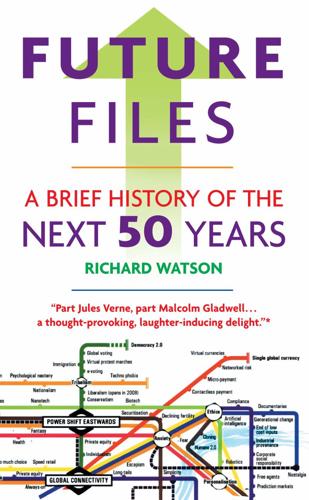
Future Files: A Brief History of the Next 50 Years
by
Richard Watson
Published 1 Jan 2008
For those under 45, eating will be about the control of body shape and appearance. Thus we will see more products like Norelift (a French jam that contains antiwrinkle compounds) and perhaps more faddish products like BustUp, a Japanese chewing gum that allegedly firms up and improves the appearance of your breasts (honestly, this exists). The future of food will thus be polarized between a number of opposites: the local and the global; the healthy and the indulgent; the futuristic and the nostalgic; the low cost and the luxurious; and the fast and the slow. For most people, convenience will be everything and if that means never peeling a potato or washing a lettuce, so be it.
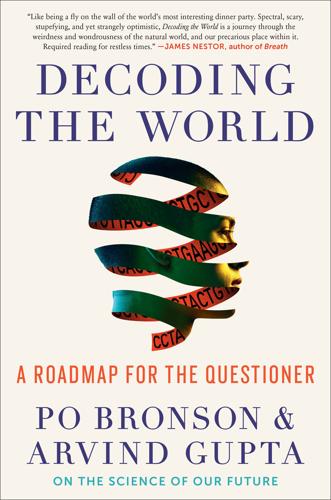
Decoding the World: A Roadmap for the Questioner
by
Po Bronson
Published 14 Jul 2020
Eighty-three percent of almost fifteen thousand people said they would. This was a turning point. Once there was some market validation, however thin, investors and scientists began to take this movement seriously. Meanwhile, I hit Sand Hill Road (the road with all the fancy VCs lined up in a row) with a presentation on the future of food so they understood what we were doing. It started with a painting of a caveman in a loincloth spearing a bear while the bear was mauling his friend. It was an important slide because it showed the importance of protein. It was so important to our diet that we used to be killed trying to get it.

Not the End of the World
by
Hannah Ritchie
Published 9 Jan 2024
In other countries croplands and pastures are still expanding, often at the cost of forests. The decline is managing to more than offset the expansion. The end result globally is a decline. It is a strong sign that we can produce more food from less land. If we take these lessons and apply them everywhere then we can achieve this everywhere. It shows that the future of food production does not need to follow the destructive path that it did in the past. The world will soon pass peak fertiliser Using less land is all well and good. But one of the reasons we can produce so much more from a hectare of land is that we can use inputs such as nutrients, pesticides and irrigation to raise crop yields.

The Human Age: The World Shaped by Us
by
Diane Ackerman
Published 9 Sep 2014
Storms of My Grandchildren: The Truth about the Coming Climate Catastrophe and Our Last Chance to Save Humanity. New York: Bloomsbury, 2009. Harman, Jay. The Shark’s Paintbrush: Biomimicry and How Nature Is Inspiring Innovation. Ashland, OR: White Cloud Press, 2013. Hauter, Wenonah. Foodopoly: The Battle over the Future of Food and Farming in America. New York: New Press, 2012. Hayden, Dolores. Building Suburbia: Green Fields and Urban Growth, 1820–2000. New York: Vintage, 2004. ———. The Grand Domestic Revolution. Cambridge, MA: MIT Press, 1982. Humes, Edward. Eco Barons: The Dreamers, Schemers, and Millionaires Who Are Saving Our Planet.
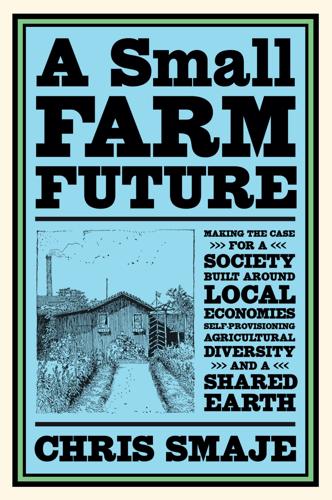
A Small Farm Future: Making the Case for a Society Built Around Local Economies, Self-Provisioning, Agricultural Diversity and a Shared Earth
by
Chris Smaje
Published 14 Aug 2020
This is where the progressive populisms of today can meet with a small-farm, agrarian populism inherited from the first populist moment in ways fit for present times that enable people to provision themselves locally and take care of themselves collectively in the challenging circumstances that are now upon us. This, ultimately, will be how to deliver a congenial and renewable small farm future. EPILOGUE Does Goldman Sachs Care If You Raise Chickens? I was well over thirty before I first raised food for my household. Already a parent, I’d only belatedly started thinking about the future of food and farming. A local farmer had sold me a few point-of-lay hens, and I tended them lovingly in the henhouse that I’d proudly made myself. Not long after I’d started, one of the hens laid the first egg – a perfect brown ellipse, about half the size of anything you’d be likely to see in the shops.
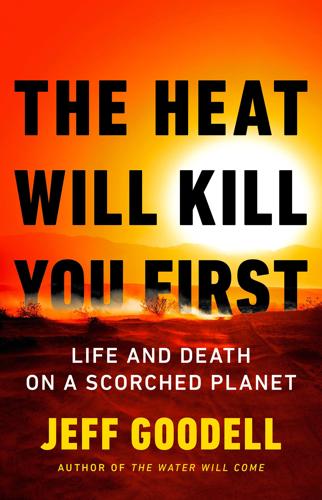
The Heat Will Kill You First: Life and Death on a Scorched Planet
by
Jeff Goodell
Published 10 Jul 2023
Flash forward five years: Webb and I are walking through a sixty-acre greenhouse near Morehead, Kentucky. His dream had become real: AppHarvest, the company he started shortly after we talked, had gone public and had a market cap of $500 million. “The old way is broken,” Webb told me. “This is the future of food.” Inside, it felt like a jungle, but a well-organized one. Thousands of tomato plants grew on scaffoldings, their roots in pods of water. Each one is watched by computers that precisely monitor the needs of each individual plant. The greenhouse uses 100 percent recycled rainwater. No chemicals, no pesticides, no agricultural runoff.
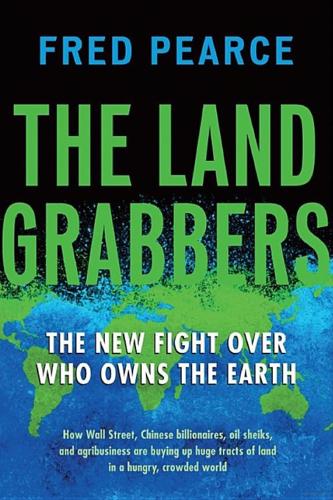
The Land Grabbers: The New Fight Over Who Owns the Earth
by
Fred Pearce
Published 28 May 2012
For modernists such as Collier and Beddington, feeding a world of 9 billion or more requires an urgent revolution in the way the world grows its food. That revolution must harness Western markets and technology, especially in Africa. Efficiency is the watchword—in production and trade. Take trade first. “Food security is best served by fair and fully functioning markets,” Beddington wrote in a report, The Future of Food and Farming, published by his government think tank in early 2011. The 2008 food price spike happened because of restrictions placed on exports by food producers. So “greater powers need to be given to international institutions to prevent trade restrictions at times of crisis.” In an aside, he agreed that “empirical evidence” does not allow him to assess the importance of market speculators in pushing up prices during those dangerous months.

Bread, Wine, Chocolate: The Slow Loss of Foods We Love
by
Simran Sethi
Published 10 Nov 2015
Embedded in every conversation about feeding people, conserving natural resources and ensuring a healthy diet, both now and in the future, is the threat of the loss of agricultural biodiversity—the reduction of the diversity in everything that makes food and agriculture possible, a shift that is the direct result of our relationship with the world around us. Once I learned about this, I knew I had to go to the places that hold the keys to the future of food. So I quit a job I couldn’t get fired from, sold my house, gave away my car and embarked on a journey to learn how we could save the tastes we love. This is a book about love, but it’s really a book about taste. I have spent over three years meeting tireless, courageous and innovative people dedicated to making our food supply secure, abundant and more delicious, traveling across six continents to interview more than 200 scientists, farmers, chefs, bakers, winemakers, beer brewers, coffee roasters, chocolate connoisseurs, conservationists, religious leaders, and advocates and experts of all types to learn the intimate stories of our foods and ways we can better save—and savor—them.
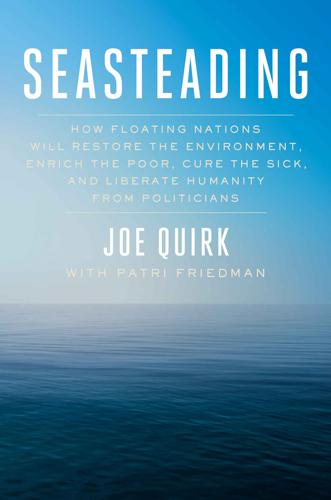
Seasteading: How Floating Nations Will Restore the Environment, Enrich the Poor, Cure the Sick, and Liberate Humanity From Politicians
by
Joe Quirk
and
Patri Friedman
Published 21 Mar 2017
We know, because we talked to each of them before any of them had heard of one another. Significant stakeholders believe that Sims’s plan will work, including NOAA, the National Science Foundation, Lockheed-Martin, the International Copper Association, Ocean Farm Technologies, the Illinois Soybean Association, and the Mexican government, the latter of which recognizes that the future of food is in aquaculture, and it wants to grab market share and secure jobs for Mexican citizens. The commercial production arm of Sims’s company Kampachi Farms has relocated to Bahia de La Paz in the Sea of Cortez, a spot seemingly designed by Neptune to test the Velella method on a larger scale. The partially enclosed bay features a giant circular oscillating current.
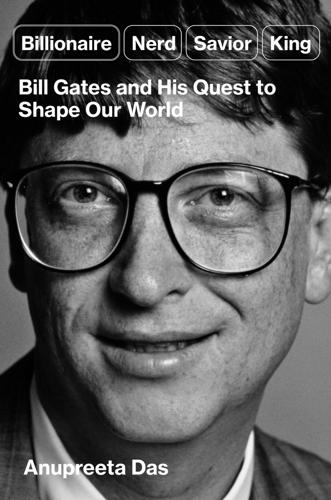
Billionaire, Nerd, Savior, King: Bill Gates and His Quest to Shape Our World
by
Anupreeta Das
Published 12 Aug 2024
His book recommendations, often posted on GatesNotes, have become so influential that in 2016, The New York Times labeled Gates the “billionaire book critic.”18 Gates has even launched a podcast and video channel called “Unconfuse Me with Bill Gates,” in which he invites guests whose expertise helps him understand a topic better. In August 2023, he invited Questlove, the musician and entrepreneur, to discuss the future of food; earlier guests included the comedians Seth Rogen and Lauren Miller, who discussed the role of humor in raising awareness of diseases like Alzheimer’s. Gates is also a star on Reddit, the online community where people discuss everything from stocks to news to sports. He has participated in at least 10 of Reddit’s “Ask Me Anything” sessions, which involve an online Q&A between Reddit users and persons of interest and stature.
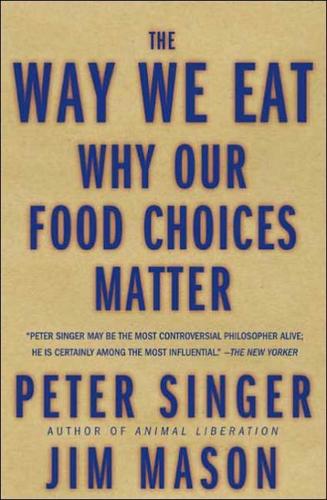
The Way We Eat: Why Our Food Choices Matter
by
Peter Singer
and
Jim Mason
Published 1 May 2006
The idea has attracted more eminent and realistic figures than science fiction writers. In 1932, Winston Churchill wrote: "Fifty years hence, we shall escape the absurdity of growing a whole chicken in order to eat the breast or wing, by growing these parts separately under a suitable medium "2s Churchill was better at predicting Hitler's aggressive intentions than the future of food production, but it may be only his timing that was astray. Within the animal movement, there are some who hope that, just as the development of the internal combustion engine has eliminated the suffering of millions of horses and oxen previously used to transport people and heavy goods, so eventually the development of in vitro meat will eliminate the suffering of billions of animals now used for meat.

Frostbite: How Refrigeration Changed Our Food, Our Planet, and Ourselves
by
Nicola Twilley
Published 24 Jun 2024
No fruits, vegetables, or grains grow there, and, although locally caught reindeer, seal, grouse, and whale are all found on local restaurant menus, the bulk of the island’s food supply is brought by container ship or on one of the two daily flights from Oslo. Nonetheless, this Arctic desert is home to more crop diversity than anywhere else on Earth. A couple of miles outside of Longyearbyen, a steel doorway embedded in a snow-covered mountain leads into the Svalbard Global Seed Vault: refrigeration’s great promise to preserve the future of food. The so-called doomsday vault is not open to the public—in fact, it’s rarely open at all. Since the first seeds were deposited in February 2008, that massive metal door has swung open only a handful of times a year, mostly to receive new accessions. I was lucky enough to be invited to tag along with Åsmund Asdal, the Seed Vault’s coordinator, on one of those occasions, to see how a subterranean freezer has become the backup system for the world’s crops.

Dark Laboratory: On Columbus, the Caribbean, and the Origins of the Climate Crisis
by
Tao Leigh. Goffe
Published 14 Mar 2025
BACK TO NOTE REFERENCE 11 George Forrest, Journeys and Plant Introductions, ed. J. Macqueen Cowan (Oxford University Press, 1952). BACK TO NOTE REFERENCE 12 National Geographic 105, no. 5 (May 1954). BACK TO NOTE REFERENCE 13 “Dirt on Our Hands: Overcoming Botany’s Hidden Legacy of Inequality, Unearthed—Journeys into the Future of Food, Featuring James Wong,” Royal Botanic Gardens, Kew, Unearthed podcast, https://podcasts.apple.com/gb/podcast/dirt-on-our-hands-overcoming-botanys-hidden-legacy/id1524216431?i=1000512363938. BACK TO NOTE REFERENCE 14 “Our Manifesto for Change 2021–2030,” Royal Botanic Gardens, Kew, 2021.
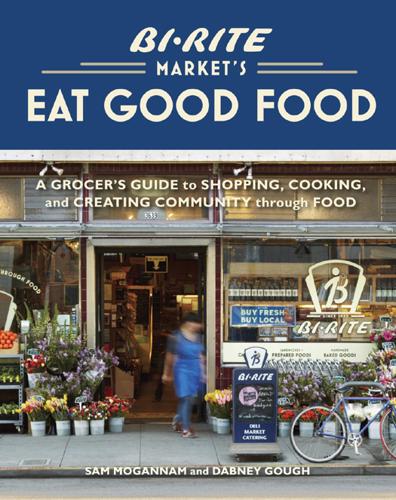
Bi-Rite Market's Eat Good Food: A Grocer's Guide to Shopping, Cooking & Creating Community Through Food
by
Sam Mogannam
and
Dabney Gough
Published 17 Oct 2011
CSAs are popping up in the smallest of communities. I discovered independently owned stores throughout the country selling great products, supporting their local economies, and with similar missions to ours: of building communities through food. The more I learned, and the more I wrote, the more hopeful I became about the future of food in America. However, we cannot simply wait for more change to happen. We cannot rely on retailers or the government to lead the charge in this movement, nor can it be limited to the products we buy and put on our plates. To be truly successful and sustainable, it must be part of a bigger evolution in understanding, appreciating, and celebrating food.

Reality Is Broken: Why Games Make Us Better and How They Can Change the World
by
Jane McGonigal
Published 20 Jan 2011
We wanted to find out more about how SEHIs think of themselves and what kinds of projects they are most likely to tackle. So who superstructs? Here’s what we found out. Out of just under nine thousand forecasters who joined the effort, the vast majority were between the ages of twenty and forty, with the rest spread out like a bell curve. Our youngest player was ten (he was particularly interested in the future of food, especially “lab-grown meat,” which is in fact an emerging food technology). Our oldest player was ninety (she was interested in the future of education). We had players from forty-nine out of fifty U.S. states and more than one hundred countries worldwide. We had a startlingly diverse group of professionals, including chief engineers, chief technical officers, chief creative officers; longshoremen, hotel concierges, and museum curators; astrophysicists, atmospheric scientists, mathematicians; nurses, plumbers, and photographers.
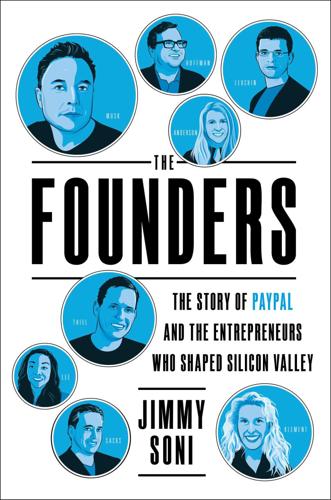
The Founders: The Story of Paypal and the Entrepreneurs Who Shaped Silicon Valley
by
Jimmy Soni
Published 22 Feb 2022
Osiakwan, “The KINGS of Africa’s Digital Economy,” Digital Kenya, 2017, 55–92, https://doi.org/10.1057/978-1-137-57878-5_3. In India: “How The Flipkart Mafia Flipped the Fate of the Indian Startup Ecosystem,” Inc42 Media, May 6, 2017, https://inc42.com/features/flipkart-mafia/. “Vegan mafia”: Christina Farr, “Meet the ‘Vegan Mafia,’ a Secret Group of Investors Betting on the Future of Food,” CNBC, August 12, 2017, https://www.cnbc.com/2017/08/11/vegan-mafia-food-investor-network-includes-bill-maris-kyle-vogt.html. “Chris, we got a message”… “maximum security prison”: Author interview with Chris Wilson, September 18, 2018. “One day”: Isaac Simpson. “After Life.” Breakout, February 17, 2017, https://medium.com/breakout-today/after-life-5ea4c1ea6d72.

Editing Humanity: The CRISPR Revolution and the New Era of Genome Editing
by
Kevin Davies
Published 5 Oct 2020
Phil Edwards, “A Renaissance painting reveals how breeding changed watermelons,” Vox, August 3, 2016, https://www.vox.com/2015/7/28/9050469/watermelon-breeding-paintings. 16. Stephen S. Hall, “Crispr Can Speed Up Nature—and Change How We Grow Food,” WIRED, July 17, 2018, https://www.wired.com/story/crispr-tomato-mutant-future-of-food/. 17. S. Soyk et al., “Variation in the flowering gene SELF PRUNING 5G promotes day-neutrality and early yield in tomato,” Nature Genetics 49, (2017): 162–168, https://www.nature.com/articles/ng.3733. 18. Z. H. Lemmon et al., “Rapid improvement of domestication traits in an orphan crop by genome editing,” Nature Plants 4, (2018): 776–770, https://www.nature.com/articles/s41477-018-0259-x. 19.

The Singularity Is Nearer: When We Merge with AI
by
Ray Kurzweil
Published 25 Jun 2024
Louis, updated April 20, 2023, https://fred.stlouisfed.org/series/LFEAAGTTUSQ647S; US Bureau of Labor Statistics, “Civilian Labor Force Level (CLF16OV),” retrieved from FRED, Federal Reserve Bank of St. Louis, updated April 7, 2023, https://fred.stlouisfed.org/series/CLF16OV. BACK TO NOTE REFERENCE 254 For more on the current vertical agriculture industry and its near-term prospects, see “Why Vertical Farming Is the Future of Food,” RealLifeLore2, YouTube video, May 17, 2020, https://www.youtube.com/watch?v=IBleQycVanU; “This Farm of the Future Uses No Soil and 95% Less Water,” Seeker Stories, YouTube video, July 5, 2016, https://www.youtube.com/watch?v=-_tvJtUHnmU; Stuart Oda, “Are Indoor Vertical Farms the Future of Agriculture?
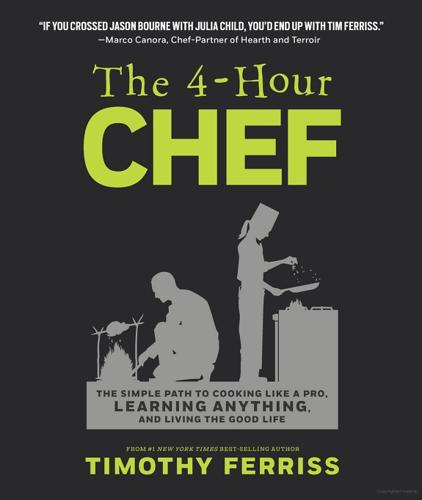
The 4-Hour Chef: The Simple Path to Cooking Like a Pro, Learning Anything, and Living the Good Life
by
Timothy Ferriss
Published 1 Jan 2012
I might not get it again. How should I be thinking about the bigger picture of food?” His answers paralleled what I’d read and heard from Mark Bittman, the great New York Times Magazine food writer: in effect, that we are at a deciding fork in the road, and the next 10 years (perhaps less) will decide the future of food production in the United States. Here are a few of my notes, from multiple sources: In the U.S., the last generation of career farmers is retiring. Specifically, more than 50% are set to retire in the next 10 years. Their farmland will be up for grabs. Will it go to an industrial agro-corp like Monsanto, and therefore most likely lead to monocrops (wheat, corn, soy, etc.) that decimate ecosystems?
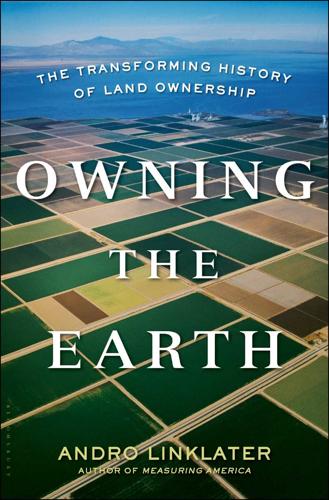
Owning the Earth: The Transforming History of Land Ownership
by
Andro Linklater
Published 12 Nov 2013
attempt to modernize Afghan society: For Rostow-inspired development in Helmand province, Afghanistan, see Little America: The War Within the War by Rajiv Chandrasekaran (London: Bloomsbury, 2012). equitable land distribution was fundamental to social stability: Typically government approaches to the challenge of feeding the future still deal with systems rather than the people who own the soil, the produce, or simply the labor. See, for example, the British government’s approach The Future of Food and Farming: Challenges and Choices for Global Sustainability (2011). For information, see Food Outlook reports twice yearly from“Global Information and Early Warning System” Food and Agricultural Organization. “the slightest problem during the entire famine”: Amartya Sen’s remarkable theory of food entitlement turns Malthus on his head, and placing the emphasis on accessing food rather than producing it.
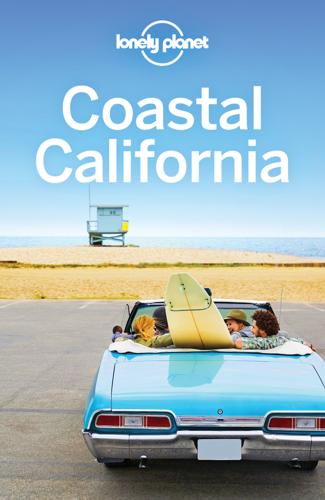
Coastal California Travel Guide
by
Lonely Planet
It comprises a cafe with wood-fired dishes, a fermentation bar with homegrown shrubs, a coffee bar with stellar pastries and a market with prepared-to-go foods. Reason enough to visit Healdsburg, the Shed is not a restaurant per se, but a dynamic multiuse culinary center, like a modern-day grange built of glass, nudging diners to see through what they're eating and take an active role in the future of food. Events, such as movie nights, biodynamic cannabis panel discussions and sushi-making workshops, are held upstairs. Costeaux French Bakery & CafeCAFE$$ ( GOOGLE MAP ; %707-433-1913; www.costeaux.com; 417 Healdsburg Ave; mains $10-13; hcafe 7am-3pm Mon-Sat, to 1pm Sun, bakery to 4pm Mon-Thu, to 5pm Sat & Sun; W) This cavernous bakery-cafe is good for an easy lunch of salads and sandwiches on house-baked bread, plus all-day breakfast dishes including omelets and scrambles.

Northern California Travel Guide
by
Lonely Planet
It comprises a cafe with wood-fired dishes, a fermentation bar with homegrown shrubs, a coffee bar with stellar pastries and a market with prepared-to-go foods. Reason enough to visit Healdsburg, the Shed is not a restaurant per se, but a dynamic multiuse culinary center, like a modern-day grange built of glass, nudging diners to see through what they're eating and take an active role in the future of food. Events, such as movie nights, biodynamic cannabis panel discussions and sushi-making workshops, are held upstairs. Costeaux French Bakery & CafeCAFE$$ ( GOOGLE MAP ; %707-433-1913; www.costeaux.com; 417 Healdsburg Ave; mains $10-13; hcafe 7am-3pm Mon-Sat, to 1pm Sun, bakery to 4pm Mon-Thu, to 5pm Sat & Sun; W) This cavernous bakery-cafe is good for an easy lunch of salads and sandwiches on house-baked bread, plus all-day breakfast dishes including omelets and scrambles.